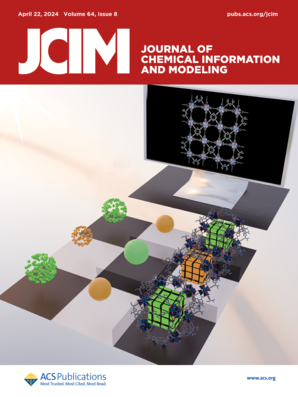有丝分裂抑制 DNA 双链断裂修复以防止端粒融合
IF 5.6
2区 化学
Q1 CHEMISTRY, MEDICINAL
引用次数: 283
摘要
有丝分裂细胞会使 DNA 双链断裂(DSB)修复失活,但这种抑制背后的原因仍不清楚。在这里,我们揭示了有丝分裂是如何阻断DSB修复的,并确定了修复重新激活的后果。有丝分裂激酶使E3泛素连接酶RNF8和非同源末端连接因子53BP1磷酸化,从而抑制它们招募到DSB侧翼染色质。恢复RNF8和53BP1在有丝分裂DSB位点的积累可激活DNA修复,但矛盾的是,这反而是有害的。异常控制的有丝分裂DSB修复会导致依赖极光B激酶的姐妹端粒融合,产生双中心染色体和非整倍体,尤其是在外源基因毒性应激的情况下。我们的结论是,有丝分裂 DSB 修复破坏基因组稳定的能力解释了在有丝分裂过程中抑制其修复的必要性,这主要是由于有丝分裂端粒的融合潜力。本文章由计算机程序翻译,如有差异,请以英文原文为准。
Mitosis Inhibits DNA Double-Strand Break Repair to Guard Against Telomere Fusions
Mitotic cells inactivate DNA double-strand break (DSB) repair, but the rationale behind this suppression remains unknown. Here, we unravel how mitosis blocks DSB repair and determine the consequences of repair reactivation. Mitotic kinases phosphorylate the E3 ubiquitin ligase RNF8 and the nonhomologous end joining factor 53BP1 to inhibit their recruitment to DSB-flanking chromatin. Restoration of RNF8 and 53BP1 accumulation at mitotic DSB sites activates DNA repair but is, paradoxically, deleterious. Aberrantly controlled mitotic DSB repair leads to Aurora B kinase–dependent sister telomere fusions that produce dicentric chromosomes and aneuploidy, especially in the presence of exogenous genotoxic stress. We conclude that the capacity of mitotic DSB repair to destabilize the genome explains the necessity for its suppression during mitosis, principally due to the fusogenic potential of mitotic telomeres.
求助全文
通过发布文献求助,成功后即可免费获取论文全文。
去求助
来源期刊
CiteScore
9.80
自引率
10.70%
发文量
529
审稿时长
1.4 months
期刊介绍:
The Journal of Chemical Information and Modeling publishes papers reporting new methodology and/or important applications in the fields of chemical informatics and molecular modeling. Specific topics include the representation and computer-based searching of chemical databases, molecular modeling, computer-aided molecular design of new materials, catalysts, or ligands, development of new computational methods or efficient algorithms for chemical software, and biopharmaceutical chemistry including analyses of biological activity and other issues related to drug discovery.
Astute chemists, computer scientists, and information specialists look to this monthly’s insightful research studies, programming innovations, and software reviews to keep current with advances in this integral, multidisciplinary field.
As a subscriber you’ll stay abreast of database search systems, use of graph theory in chemical problems, substructure search systems, pattern recognition and clustering, analysis of chemical and physical data, molecular modeling, graphics and natural language interfaces, bibliometric and citation analysis, and synthesis design and reactions databases.

 求助内容:
求助内容: 应助结果提醒方式:
应助结果提醒方式:


